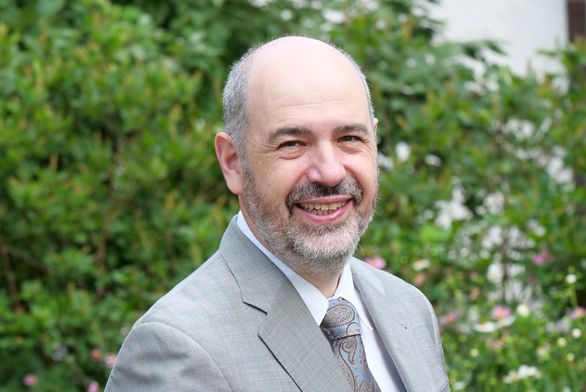Michael Atwood Mason (SF88) Curates History and Heritage at Lincoln’s Cottage
January 3, 2022 | By George Spencer

Museum curator Michael Atwood Mason (SF88) has an enviable job. As the CEO of President Lincoln’s Cottage, he’s aiming to bring visitors to what he calls one of the nation’s best—and least known—historic treasures: the 34-room Gothic Revival mansion in Washington, DC that served as a presidential sanctuary for the Lincolns for three years, starting in 1862, during the fall and summer.
“[At the cottage,] we tell stories that really reveal the true Lincoln in all of [his] complexity,” says Mason, who was previously the director of the Smithsonian Center for Folklife and Cultural Heritage and director of exhibitions at the Smithsonian National Museum of Natural History.
The cottage, today a museum on the grounds of the Armed Forces Retirement Home, contains a wealth of information about one of the country’s most famous leaders. For example: The president and his wife Mary originally sought refuge at the cottage following the death of their 11-year-old son Willie in February 1862. Lincoln made 45-minute commutes from the 250-acre hilltop estate to the White House—three miles away—on horseback. He drafted the Emancipation Proclamation in the cottage.
“He literally wrote bits and pieces of it on pieces of paper and tucked them in his hat. His valet gathered them up and organized them a little and left them on his desk,” says Mason.
The estate, whose grounds now occupy two acres, has only been open to the public since 2008. Visitors who take the group tour—the only way to visit the home—will hear little-known stories about the president.
“We know Lincoln read poetry in the national cemetery next door while walking among the graves of newly fallen soldiers,” says Mason. “He helped one of his surviving sons, Tad, get a bird out of a tree. One evening he invited a soldier onto the veranda to play checkers.”
Mason feels humbled by the richness of his setting. “I’m particularly fond of the veranda which faces south out over the city, because we know he played checkers there with his son. As a parent it’s very easy to imagine myself there playing checkers with my kid.”
“It’s a privilege to come here every day and talk about this amazing person in a way that doesn’t idealize him but embraces his humanity in both the beauty of his life and the unrelenting challenges he faced,” he adds.
Mason came onboard at President Lincoln’s Cottage in September 2021. Since then, he and his team have been developing an array of strategic plans for the museum: an effort that will include a major marketing campaign and a reimagining of its online offerings. Only 34,000 tourists visited the home in 2019, compared to the eight million who went to the Lincoln Memorial that year.
“For whatever reason, the cottage remains a hidden gem. We’ve been voted the best museum off the National Mall four times, and somehow people still don’t know about it. We’ll crack that nut,” insists Mason, who hopes to triple the number of visits in the near future.
An Annapolis native, his love of the past caught fire as a child listening to stories about his family’s history. Although he is a curator, Mason thinks of himself as someone who works in the field of heritage.
“Heritage is so interesting because it’s about who we are and where we’ve come from, but it really is about where we’re going.”
Looking back, Mason feels he has been “incredibly fortunate” during his career. As director of the Smithsonian’s Folklife center, he led a cultural sustainability program that supported artisans around the world by helping them create more saleable products and connecting them to global markets. Prior to that, at the natural history museum, he spearheaded a major exhibition on human origins.
“It answered the question, ‘What does it mean to be human from a scientific point of view?’ We opened that show at a time when only 45 percent of Americans believed in ‘evolution,’ ” says Mason. “We did it in a way that was respectful, and we trained volunteers and staff to engage people who were hostile to the content in constructive ways. We created a product that was a testimony to what good science exhibitions can be.”
Now, at Lincoln’s summer home, Mason seeks to use his experience to invite visitors to make connections between the past and the present. “We always strive to inspire them to some kind of action,” says Mason, “because—as Lincoln said in the Gettysburg Address—there’s unfinished work in the republic.”

